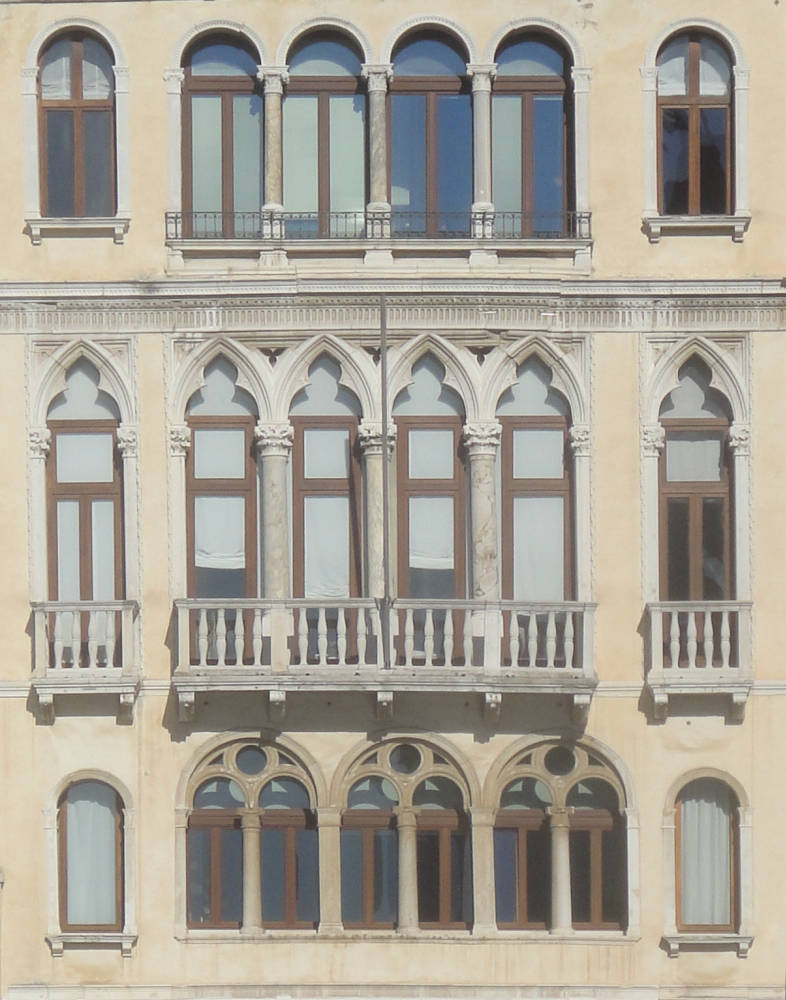
Ca Ferro (now the Grand Hotel) on the Grand Canal. Click on images to enlarge them.
In The Stones of Venice John Ruskin describes this palazzo as “Fifteenth century Gothic, very hard and bad” (11.379), though that did not stop him from staying at the Grand Hotel in 1876 (10.9n). In fact he revised the first chapter, “The Throne,” there, and in Fors Clavigera he tells us in his letter of 9 November 1876,
I have set my writing table close to the pillars of the great window of the Ca Ferro, which I drew in 1841, carefully, with those of the next palace Ca’ Contarini Fasan. Samuel Prout was so pleased with the sketch that he borrowed it, an made the upright drawing from it of the rich palace with the rich balconies, which now represents his work very widely as a chromo-lithotint.
Between the shafts of the pillars, the morning sky is seen pure and pale, relieving the grey dome of the church of the Salute; but beside that vault, and like it, vast thunderclouds heap themselves above the horizon, catching the light of the dawn upon them when they rise, far westward, over the dark roof of he ruined Badia — but also so massive, that half an hour ago, in the dawn, I scarcely knew the Salute dome and towers from theirs; while the sea-gulls, rising and falling hither and thither in clusters above the green water beyond my balcony, tell me that the south wind is wild on Adria. [24.756]


The Grand Hotel amid its neighbors on the Grand Canal and a detail of its façade.
More of Ruskin's Venice
- St. Mark’s
- The Palazzo Ducale, Venice
- The Scuola de San Rocco
- On the Grand Canal
- Leaving the Grand Canal
- On the way to Venice from the mainland
- Venice: Details and Corners
Photographs 2020. [You may use these images without prior permission for any scholarly or educational purpose as long as you (1) credit the photographer and (2) link your document to this URL in a web document or cite the Victorian Web in a print one.]
Bibliography
Ruskin, John. The Works. Ed. E. T. Cook and Alexander Wedderburn. “The Library Edition.” 39 vols. London: George Allen, 1903-1912.
� �
Last Modified 18 March 2020